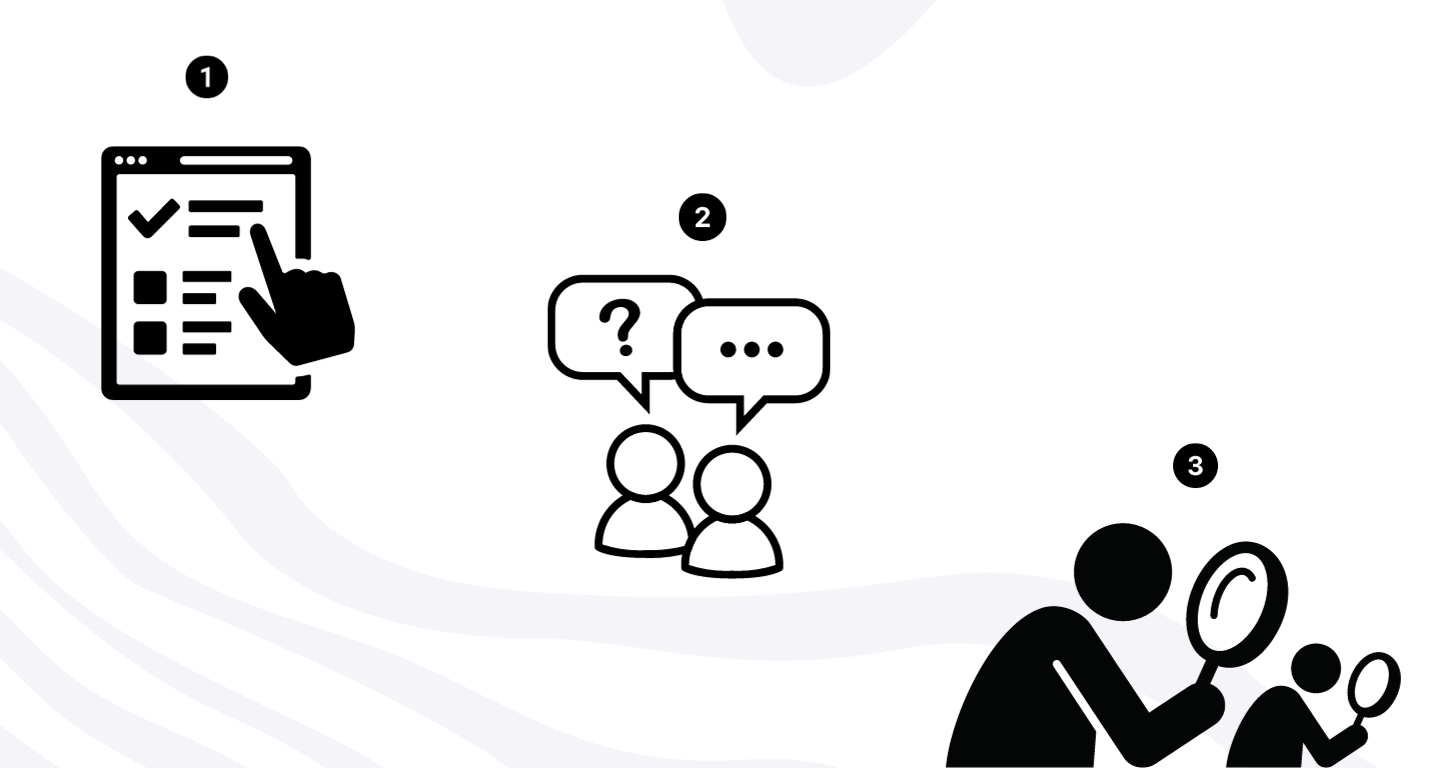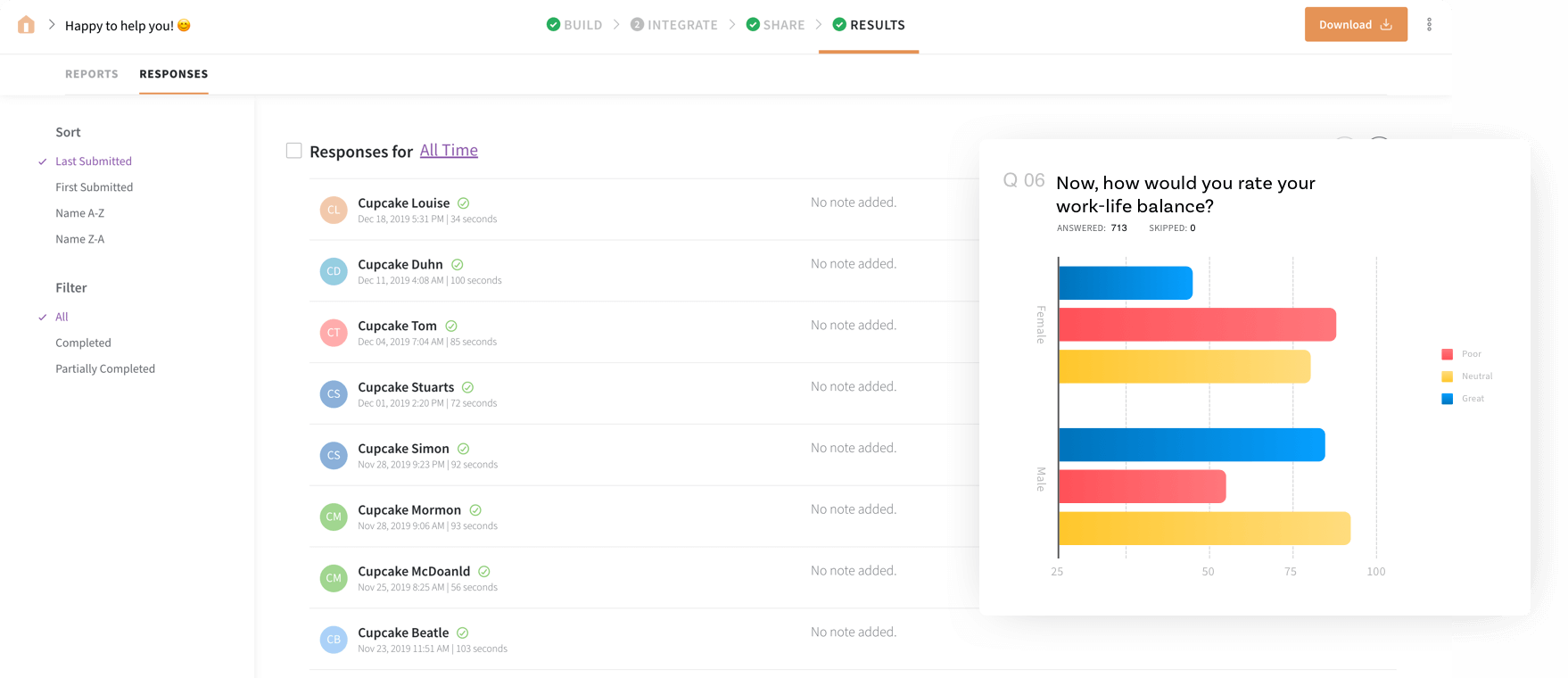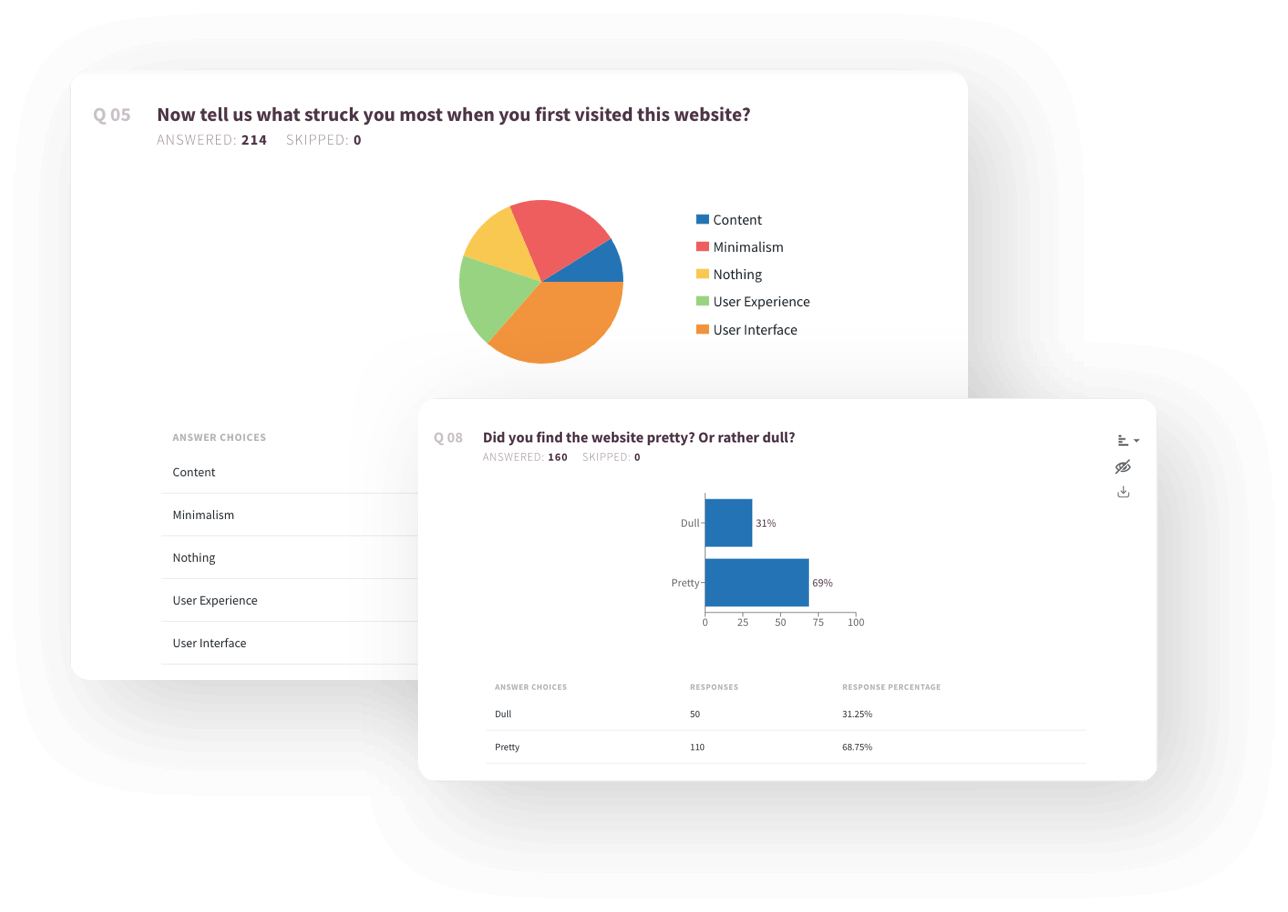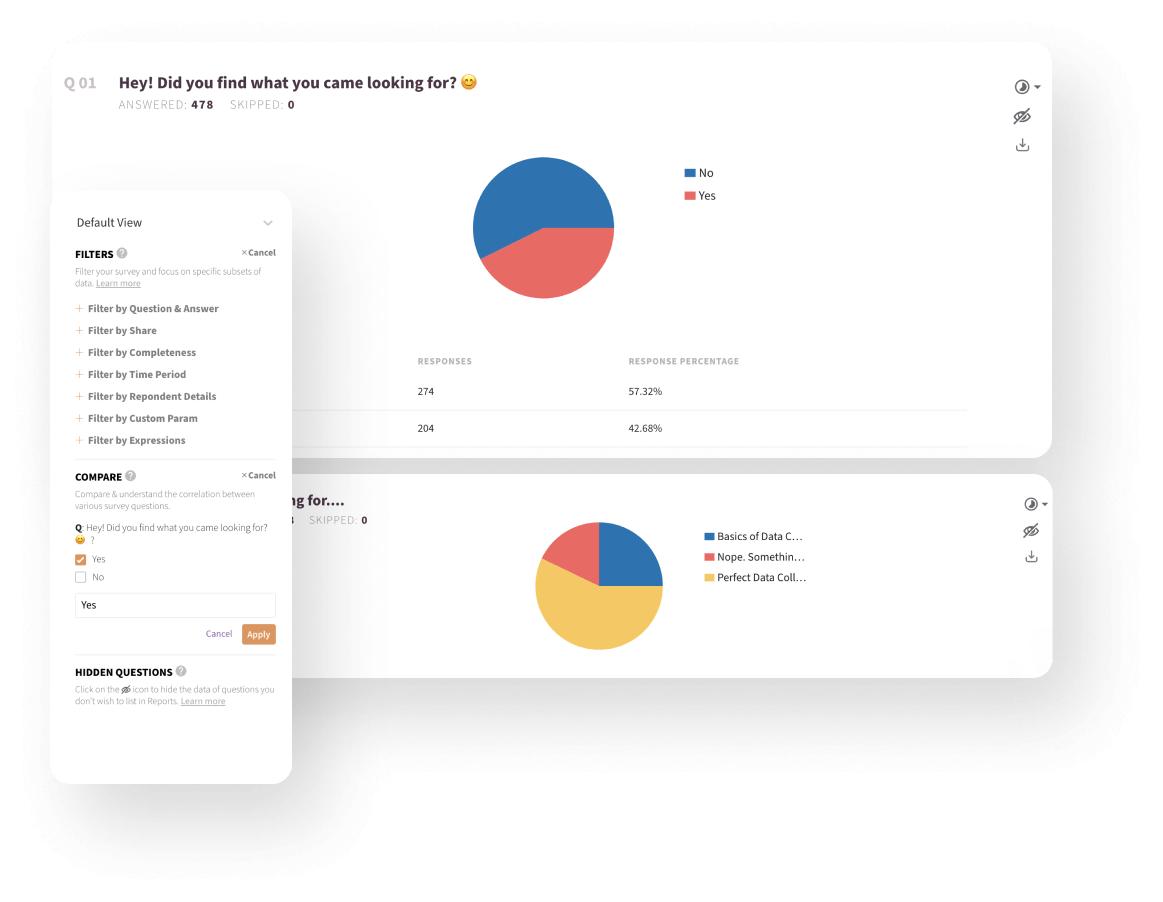Survey & Feedback
How To Do Primary Research: An Ultimate Guide
Article written by Debarati Mukherjee
Debarati
11 min read
19 September 2025

The onset of COVID-19 changed our lives in various aspects – work culture, entertainment, and relationships. While these variations are here to stay, it becomes crucial for business owners to gauge the market minutely more than ever. The two most powerful tools for analyzing the market are primary research and secondary research.
Secondary Research is when researchers use information and facts published from existing research.
But what is primary research? Let’s dive in.
What Is Primary Research?
Primary research is when businesses that plan to enter a new market conduct research to read and understand the industry. The purpose of hosting the research is to collect information and feedback from the target audience.
In other words, we can say that it is the firsthand, original information that you gain by asking your potential customers. The researchers use multiple methods, such as surveys, observations, and interviews.
This mode of research requires you to communicate with your target audience directly to collect data. It is the most focused and infallible methods to analyze the market and its needs, enabling you to empathize with your audience. The information gathered through this mode of research is concrete and detailed.
The 3 Types Of Primary Research

1. Surveys
Surveys are the best way to conduct primary research, mainly when You are targeting a large audience. When you want to gather specific information from your audience, hosting a survey with those particular questions can help you get clear answers. But, when conducting a survey, one must be very careful with the questions. The answers won’t be helpful unless you are very detailed, clear, and specific about your questions.
Conducting surveys both online and offline is feasible. But online surveys are more convenient, especially in such trying times when attention spans have plummeted. Moreover, it is important to keep your audience engaged for a higher completion rate.
Let’s take an example to understand better.
Suppose you want to launch a skincare line. Plenty of established products are in the market, so it is crucial to understand the factors that would make your brand stand out.
In this case, you can share a survey with your potential customers to understand what’s missing in regular supplies. You need to dive deep into their desires. Your aim must be to develop textures and fragrances that leave customers saying, “Wow, this is exactly what I’ve been looking for!”
For this, ask specific questions and get into minute details. Not just ask, but engage. And, what’s better than a chat-like survey to keep them hooked?
Skin Care Product Survey Template
Use This TemplateIf you were filling out this form, wouldn’t you be compelled to complete it? That’s exactly what you should aim for!
Use this template, or feel free to sign up right there if you wish to try out more. You can customize the existing 1000+ templates or create one from scratch.
Let’s move on to the next type…
2. Interviews
Conducting one-to-one interviews with your potential customers is a great idea. But, when you plan to reach out to a large audience, it becomes problematic.
If you are looking for in-depth information from a limited audience, hosting interviews would be the best option. Pick your audience, select your topic, and get rolling!
Now, let’s take the same example as above – launching a chain of premium bakery stores. Interviews could give you outstanding results. However, the research will be limited to a specific audience group.
Apart from one-to-one interviews, you can also conduct a focus group interview to comparatively address a more vast audience.
3. Observations
Even though one can never deny the power of observation yet, it is the least popular method of conducting primary market research. This is because observations can answer your questions but cannot provide you with detailed information.
Take the same example of a chain of premium bakery stores; your observations can give you a vague idea of what customers might be looking for. To understand the exact requirements, you need to communicate with them.
Therefore, we can say observation is an intelligent tool for market research. But cannot be used as the only tool. In fact, in some instances, like if you want to understand people’s lives after a pandemic, you will need to use a survey or interviews. Observations will be of little help.
Choose The Right Primary Market Research Method
As discussed above, primarily, there are three types of methods by which you can conduct primary market research. So it is essential to know which one to use and when.
Choosing the suitable method will depend on the business for which you want to conduct the research. Apart from that, other factors that will decide the technique are – the type of result you are looking for and the set of audience you want to be a part of your research.
Going ahead with the same example of a chain of premium bakery stores, you can try starting with observations if you want to understand your competitors. You can visit their stores to observe the customers.
What else should you do?
Even though online surveys would be the best choice in this situation, you can start conducting interviews, too! Start interviewing people in your neighborhood. Find out if they are interested in having a premium bakery store in their locality, and if they want, what are their expectations.
Once you get an initial set of results, you can then host a survey that would include a bigger audience with a detailed report.
It is always good to conduct detailed research before making any decision.
Target The Right Audience For Primary Research
It goes without saying that targeting the right audience while conducting market research is very important. Consider approaching any and every group of people who you think can be your potential customers.
You see, before you can target the right audience, you need to have a deep understanding of your product or service. What problem does it solve? What are its unique features and benefits?
You can also include failed leads in your research. Feedback from your failed leads is also equally important to understand the market.
For instance, let’s say you have a mobile app that helps people track and improve their fitness. How do you target the right audience?
- First, you need to understand who your ideal customers are. Create a detailed picture of them, like their age, interests, and problems they want to solve.
- Then, find out where they hang out, whether it’s on social media, in specific groups, or reading certain blogs. Once you know this, make marketing messages that talk to them personally, addressing their needs and interests.
- Use the right places to show these messages, like social media or ads.
- Keep an eye on how well your messages work and adjust them if needed. This way, you can reach the people most likely to be interested in what you offer and make your marketing more effective.
How To Conduct A Primary Research?
Primary market research is a reliable tool to determine the market. And you will be a winner when you structure the research. To organize your research, you can follow the steps below to get started.
Step 1: Identify The Method Of Primary Research
Depending on the type of results you are looking for, the research can either be qualitative, quantitative or both.
When you choose to do qualitative research, you should opt for interviews. As discussed earlier, interviews can get you concrete results but with a smaller number of people.
But when the outcome you desire is quantitative, you need to roll out surveys.
Surveys are always good with quantity, and not to mention, they will get you answers to specific questions, and of course, it is faster.
At times, your research might require a mixed result of both qualitative and quantitative. In that case, you can use all three forms.
Read More: 14 Best Online Survey Tools
Step 2: Select Your Respondents
Once you know the type of results and the method you will use, shortlist your participants.
To start selecting your respondents, you will have to decide on the criteria based on which you will pick your audience. Your participants can be from a specific demography, a specific age group, a specific gender, a taste, or maybe a mix of multiple such factors.
Based on these factors, you can define the respondents who would suit your research the best.
Step 3: Intimating Your Participants
When your final participant list is ready for the research, how you invite them to take part in it is essential.
Your audience should feel a sense of importance when you request them to be a part of the research. You should personalize the message to make them feel that their feedback is valuable. Unless you do that, the chances of them not participating would be high.
Step 4: Result Analysis
The most important step comes after the commencement of your research – analyzing the results. In the case of interviews and observations, the report analysis is straightforward compared to surveys. Here, all you have to do is underline the points that would impact your decision.
But if you have chosen surveys to conduct your research, analyzing the data could be a trick. This is because surveys can provide you with statistical data. Filtering out the data based on every parameter would give you rock-solid results.
SurveySparrow gives you the advantage of customizing your reports and filtering them based on your required parameters. In short, it makes your job more efficient and more manageable.



Primary Research vs Secondary Research
| Primary Research | Secondary Research | |
|---|---|---|
| Source | Firsthand | Existing |
| Involvement | Direct | Indirect |
| Data freshness | Recent | Historical |
| Cost | Higher | Lower |
| Customization | Tailored | Fixed |
| Time | Longer | Faster |
| Accuracy | High | Varies |
| Control | High | Limited |
Let’s take a look at a few points in detail:
- Secondary research involves utilizing data, summaries, and reports of existing analyses published earlier to conclude a study.
- Unlike primary research, secondary research does not require any direct involvement of the researcher.
- Scenarios like legal issues, historical events, or scientific studies primarily use secondary research.
- The data generated from primary research is gathered from direct communication with the target audience. In contrast, secondary research data is accumulated from existing research.
- While primary research is time-consuming, secondary research is faster.
- Comparatively, secondary research is less expensive.
- Apart from all these, where the accuracy of secondary research can be questionable, primary data is concrete and can be customized based on the requirement.
Wrapping Up…
When getting into the market, it is advisable to conduct thorough primary research to attain the desired outcome for your business.
And, surveys turn out to be an impactful tool here.
When designing a powerful survey, ensure that it is engaging and gripping enough to get results.
We at SurveySparrow enable you to create exciting and engaging surveys to bring the best out of them. With an assured 40% more response rate, our surveys are conversational and customizable.
14-day free trial • Cancel Anytime • No Credit Card Required • No Strings Attached

Create engaging surveys that people actually complete. Try SurveySparrow now!
Debarati Mukherjee
Related Articles

Survey & Feedback
How Expert Analysts Actually Extract Value from Survey Findings
15 MINUTES
15 April 2025

Survey & Feedback
10 Best AI Form Builders to Boost Data Collection with Engaging AI Forms
13 MINUTES
26 August 2023

Survey & Feedback
How To Use Surveys In SEO Analysis?
9 MINUTES
13 March 2023

Survey & Feedback
What Makes Online Surveys The Best Of Field Research Methods
11 MINUTES
26 December 2018
